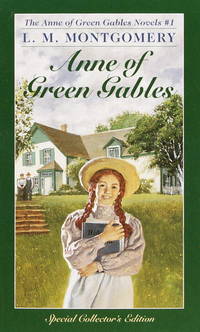
Anne of Green Gables
by Montgomery, L.M
- Used
- Condition
- Used - Good
- ISBN 10
- 055321313X
- ISBN 13
- 9780553213133
- Seller
-
Waltham, Massachusetts, United States
Payment Methods Accepted
About This Item
Synopsis
Anne of Green Gables is the first novel by Canadian author Lucy Maud Montgomery. The story tells of the adventures of Anne Shirley, an 11-year-old orphan girl who is mistakenly sent to Matthew and Marilla Cuthbert, a middle-aged brother and sister who had intended to adopt a boy to help them on their farm in Prince Edward Island. Like many of her contemporaries, Montgomery did not consider submitting her first novel to a Canadian publisher, convinced that a more lucrative deal could be made with an American firm. The novel was completed in 1905, but was rejected by four major American publishing houses, and it was not until 1907 that Montgomery found a publisher. L.C. Page & Co. finally published Anne of Green Gables in 1908. Anne of Green Gables has sold more than 50 million copies and has been translated into more than 30 languages. Following the success of her first novel, Montgomery went on to write seven more books about Anne, following the beloved protagonist through adulthood and motherhood. Several novels in the series have been adapted and made into a successful television miniseries. Montgomery museums, plays, and houses on Prince Edward Island draw international visitors.
Read More: Identifying first editions of Anne of Green Gables
Reviews
For juveniles? Realy? I am 58 and always liked it. And tears drop on my cheeks every time.
(Log in or Create an Account first!)
Details
- Bookseller
- More Than Words Inc.
(US)
- Bookseller's Inventory #
- WAL-F-3d-000975
- Title
- Anne of Green Gables
- Author
- Montgomery, L.M
- Book Condition
- Used - Good
- Binding
- Paperback
- ISBN 10
- 055321313X
- ISBN 13
- 9780553213133
- Publisher
- Bantam Books (Classics)
- Place of Publication
- New York, New York, U.s.a.
- This edition first published
- 1982-04-01
Terms of Sale
More Than Words Inc.
30 day return guarantee, with full refund including original shipping costs for up to 30 days after delivery if an item arrives misdescribed or damaged.

